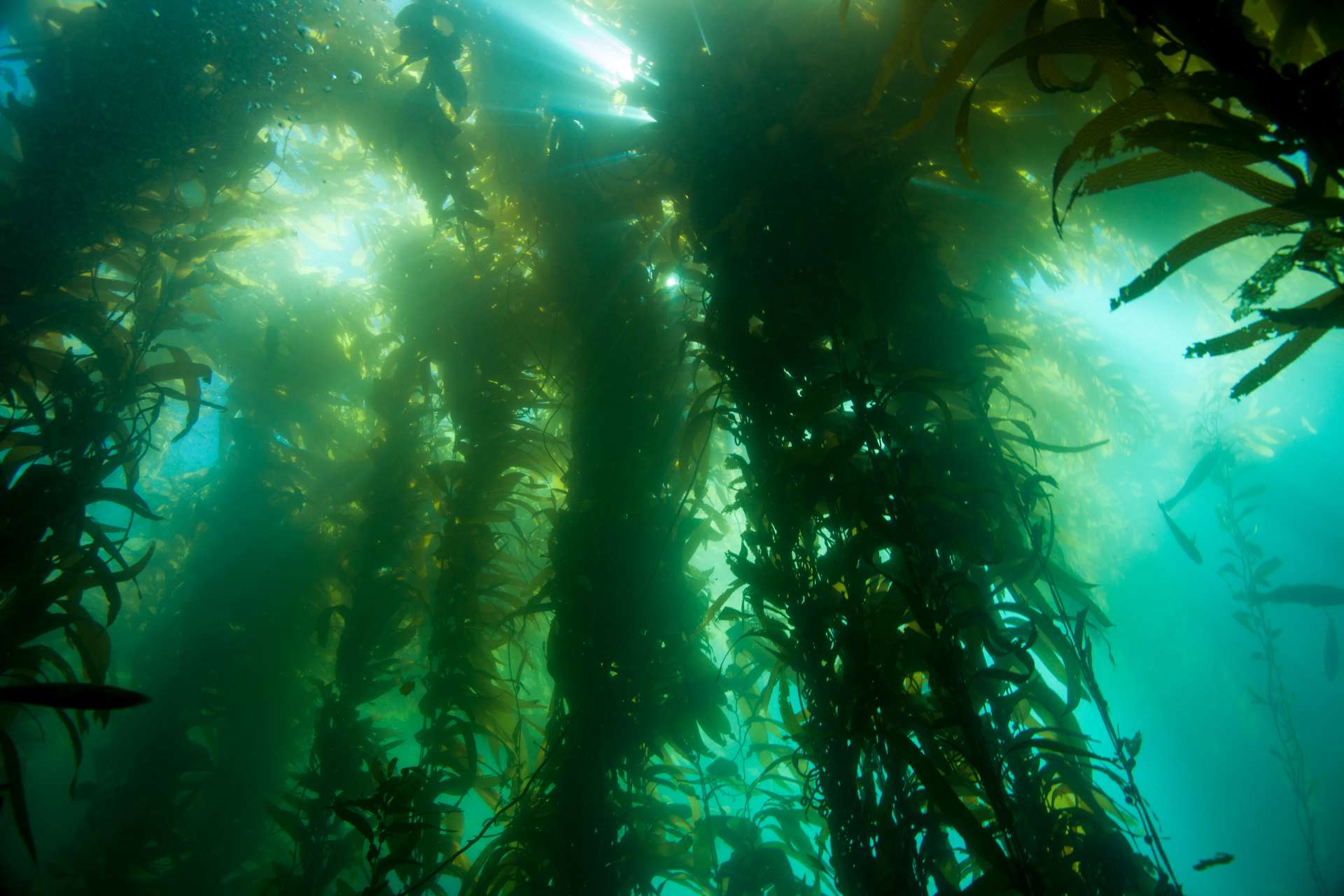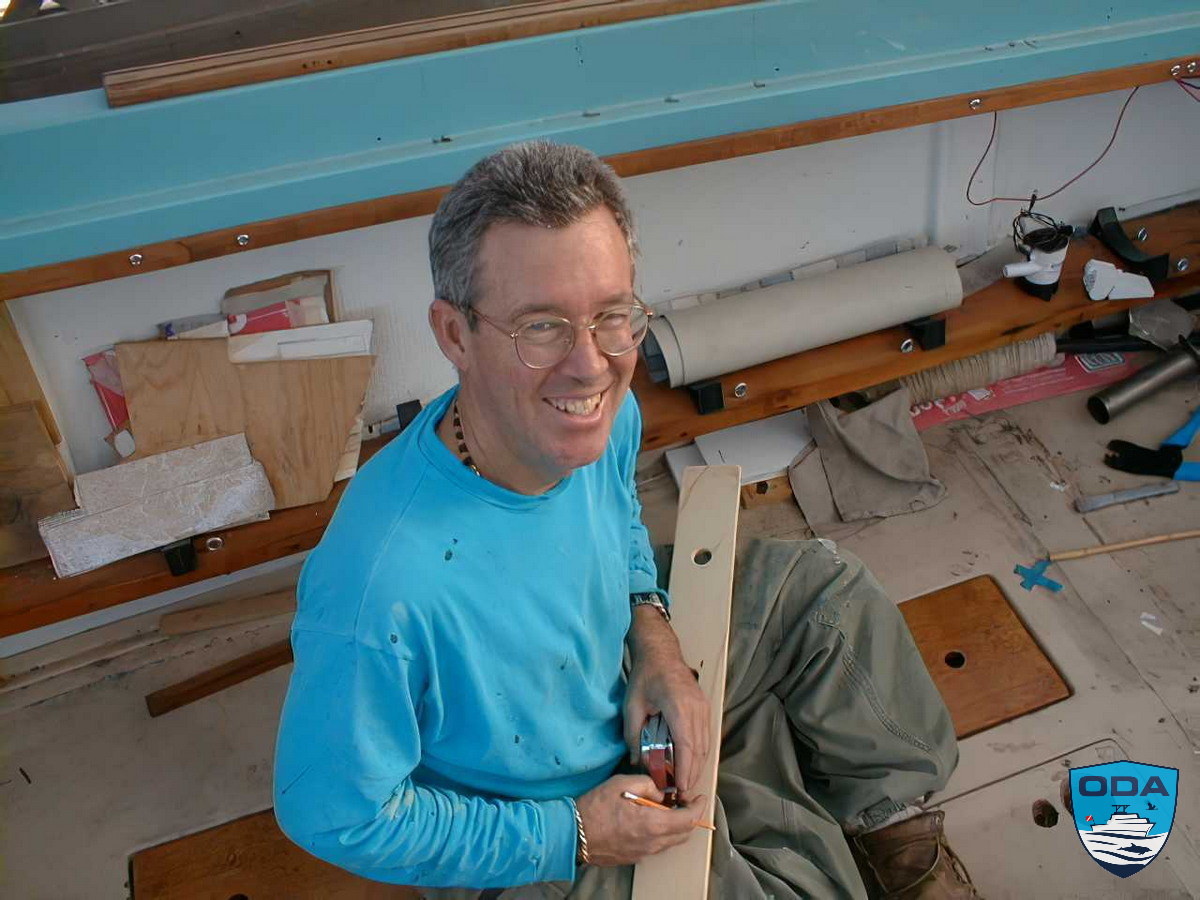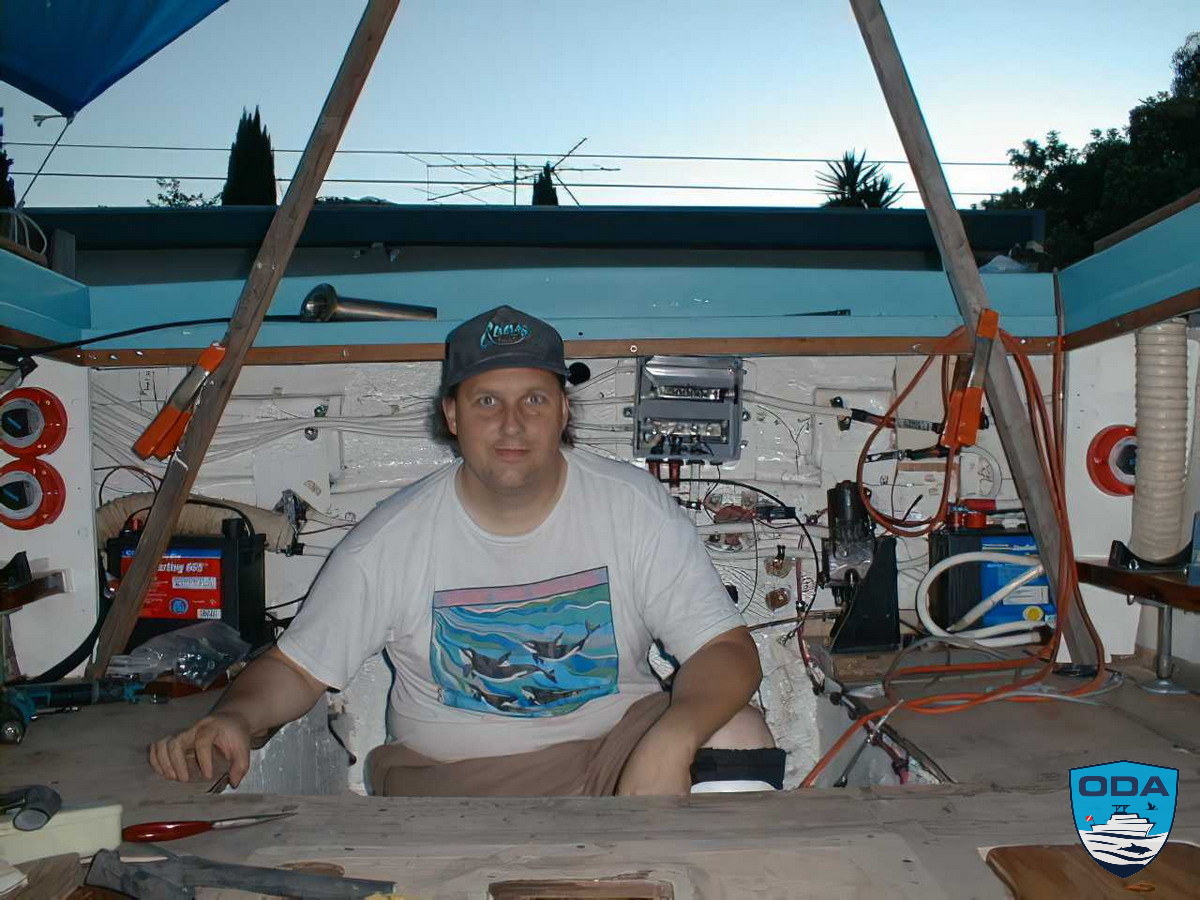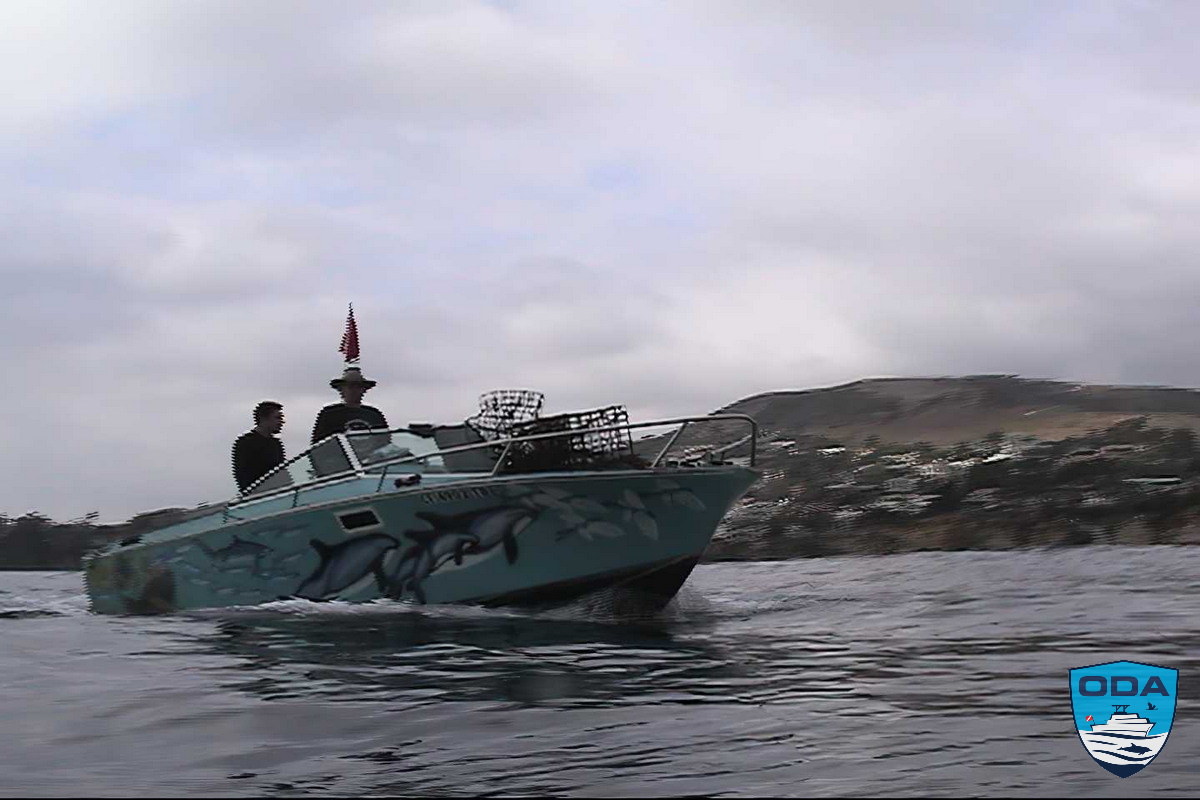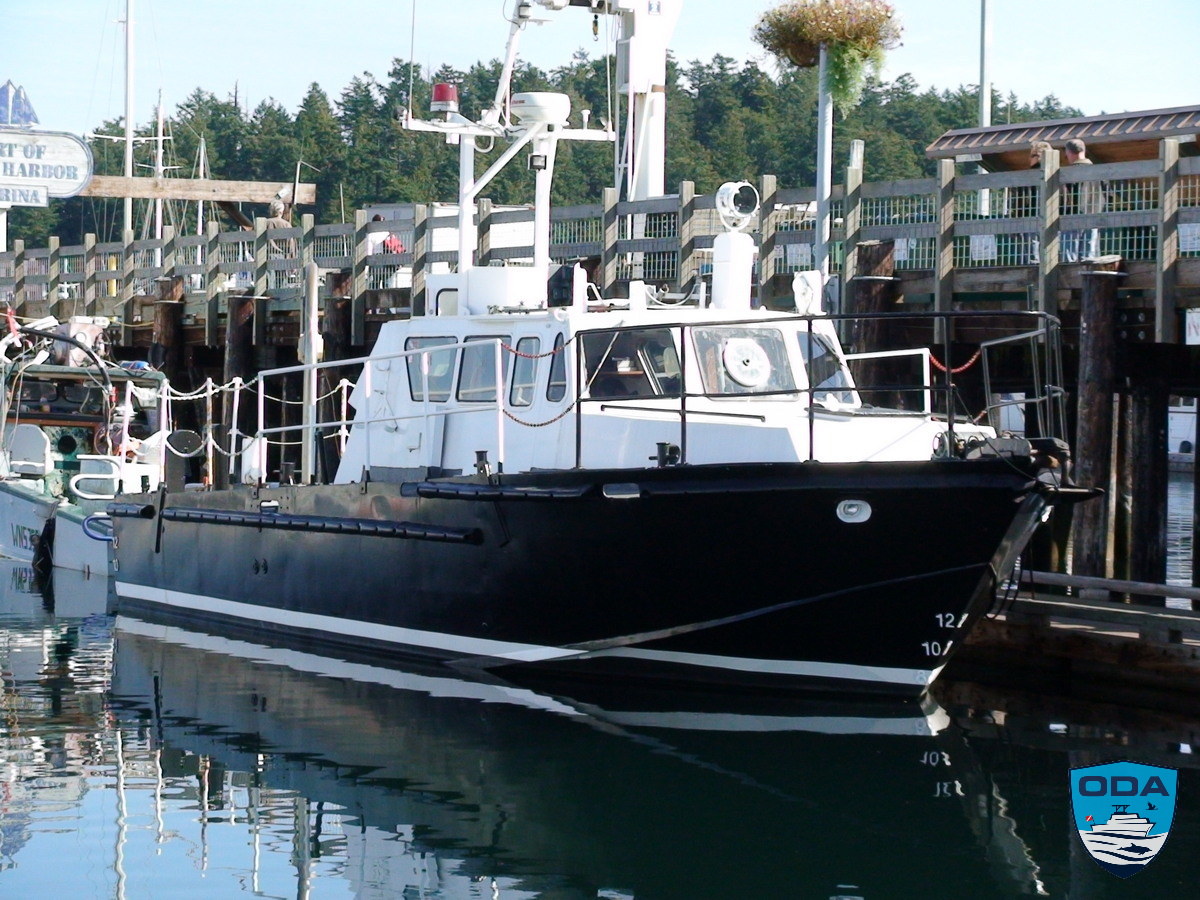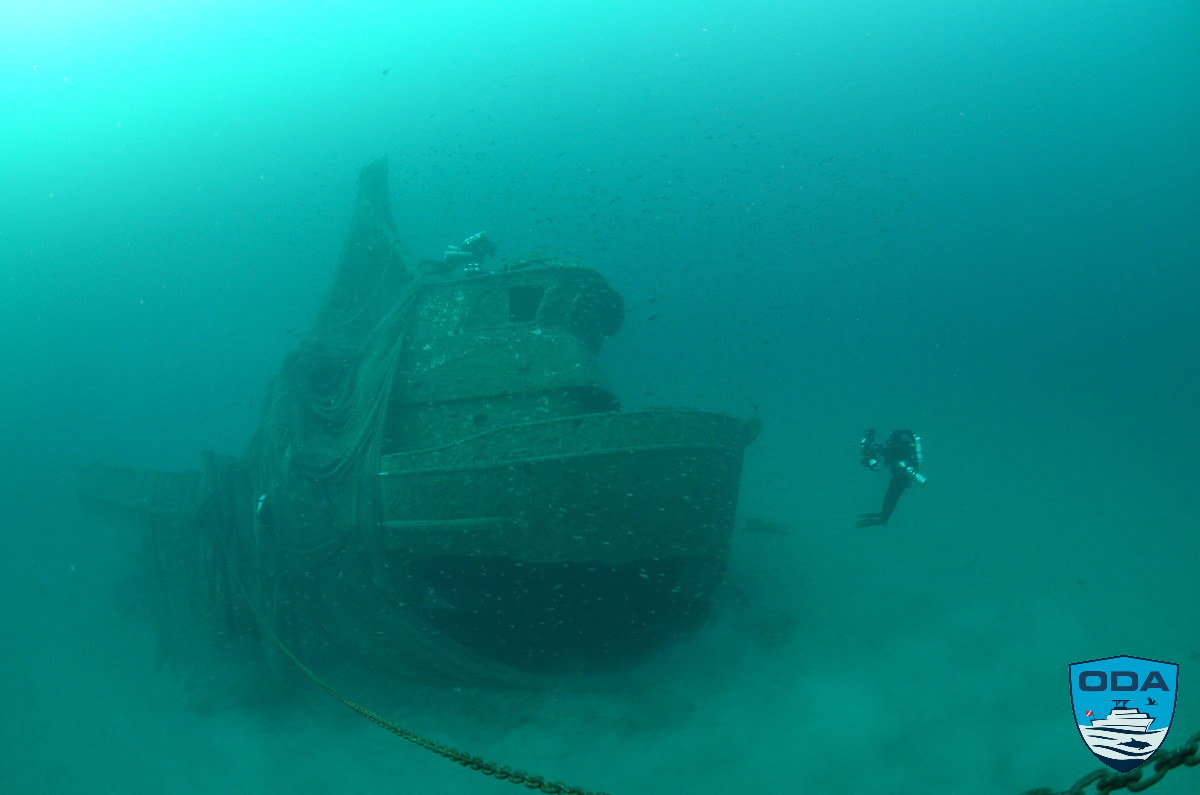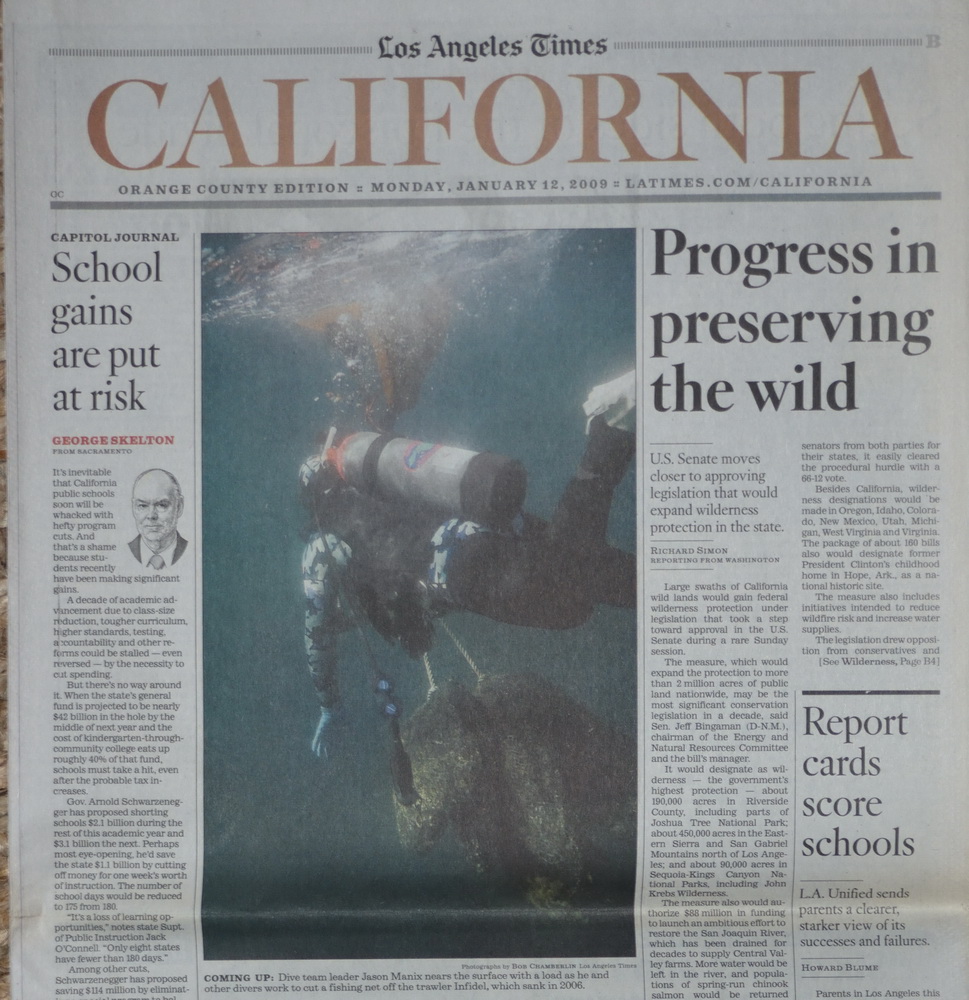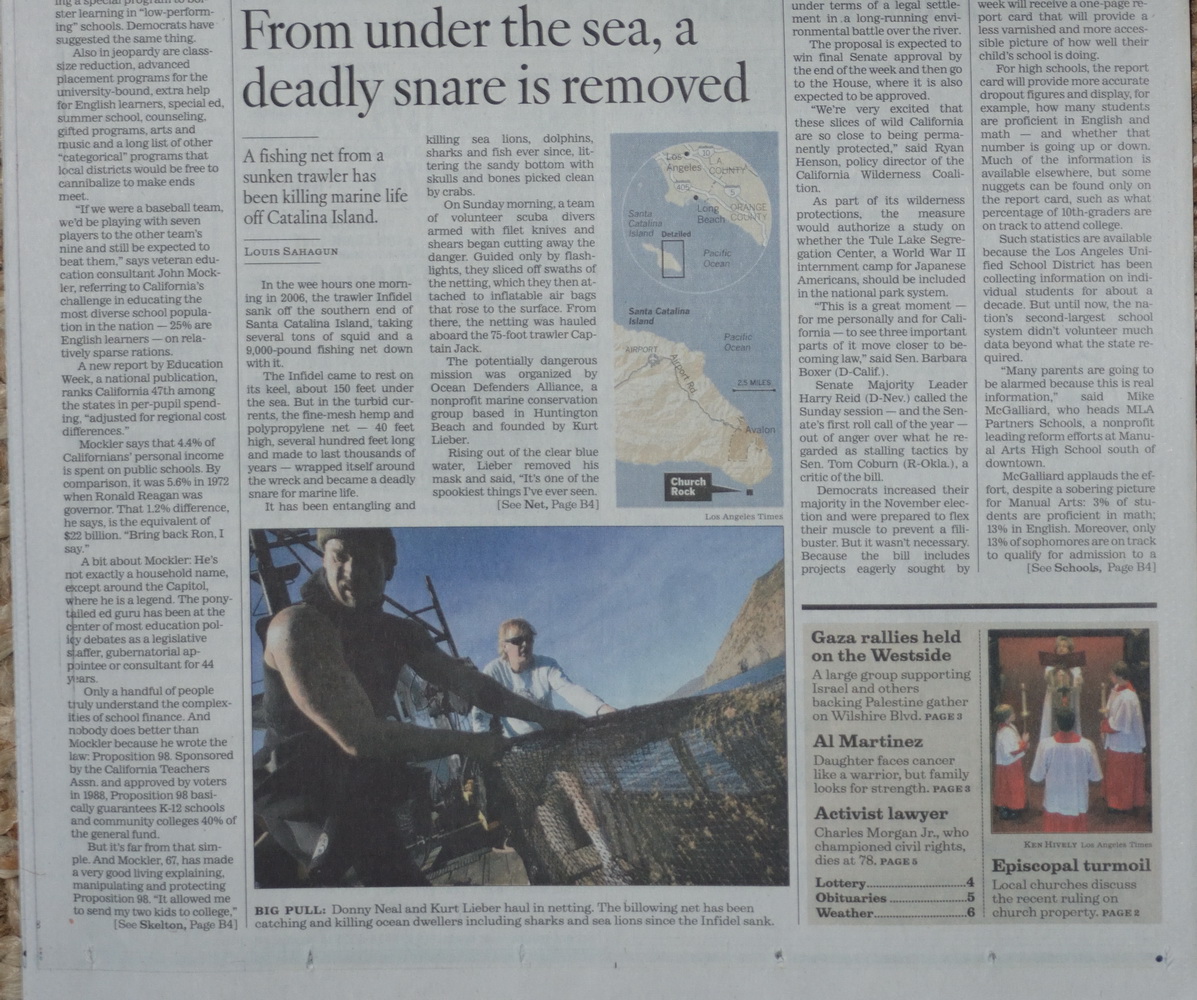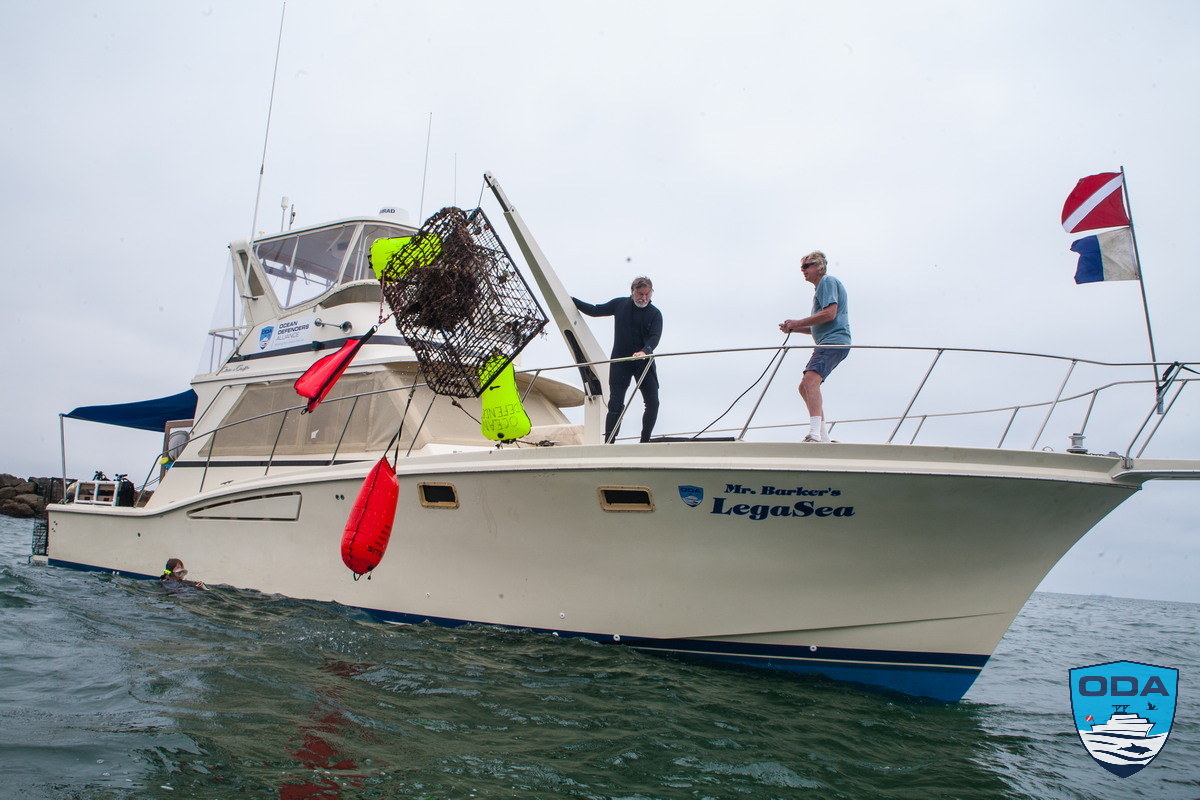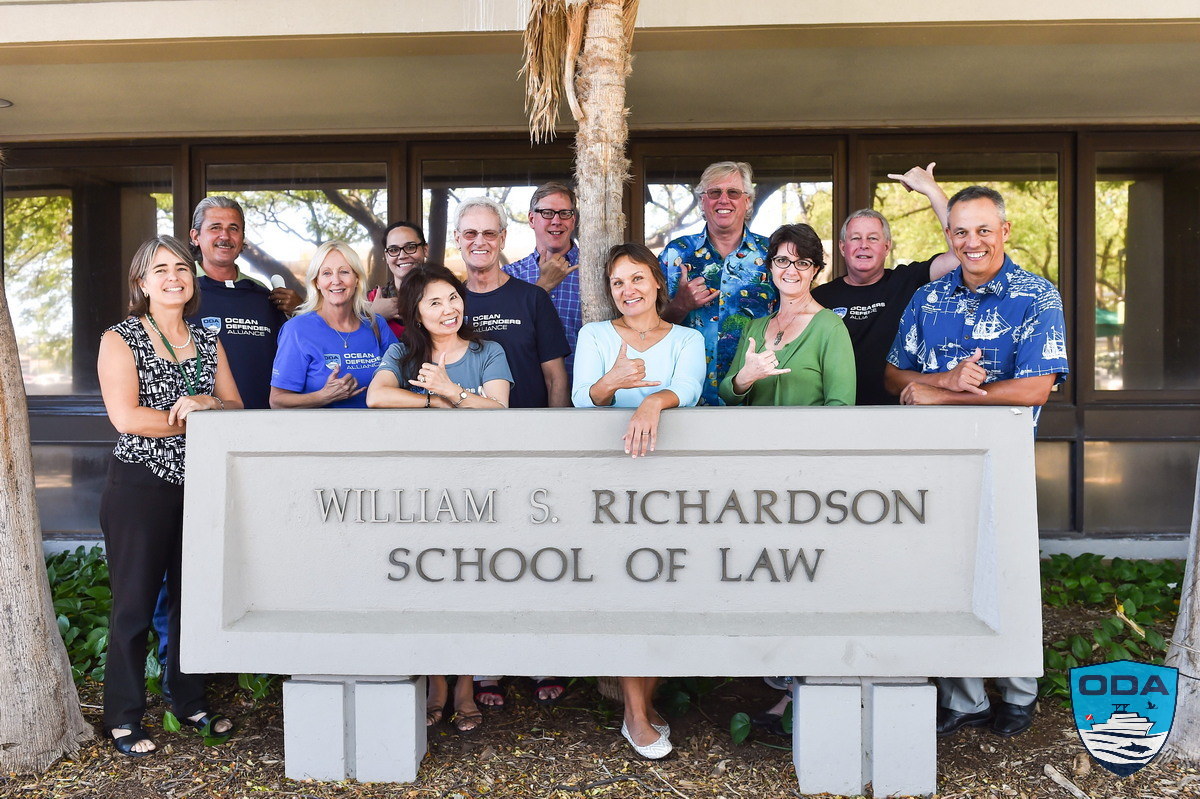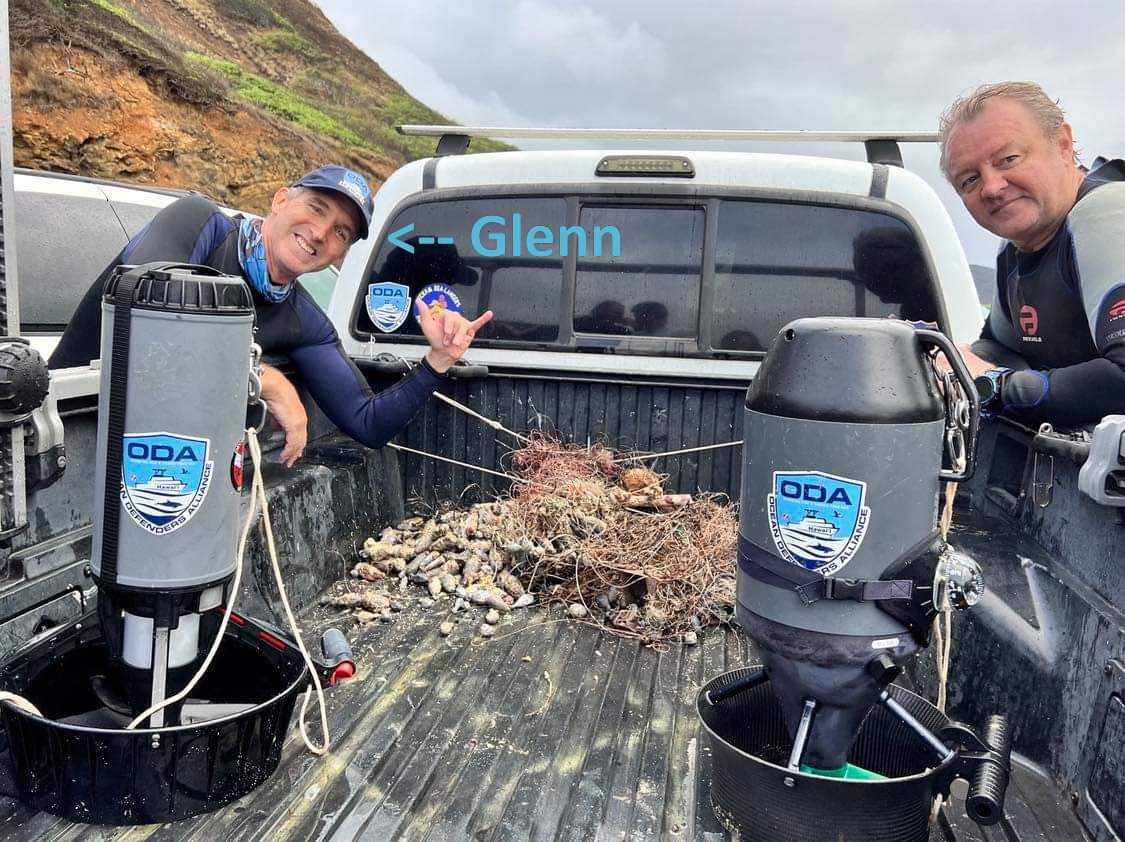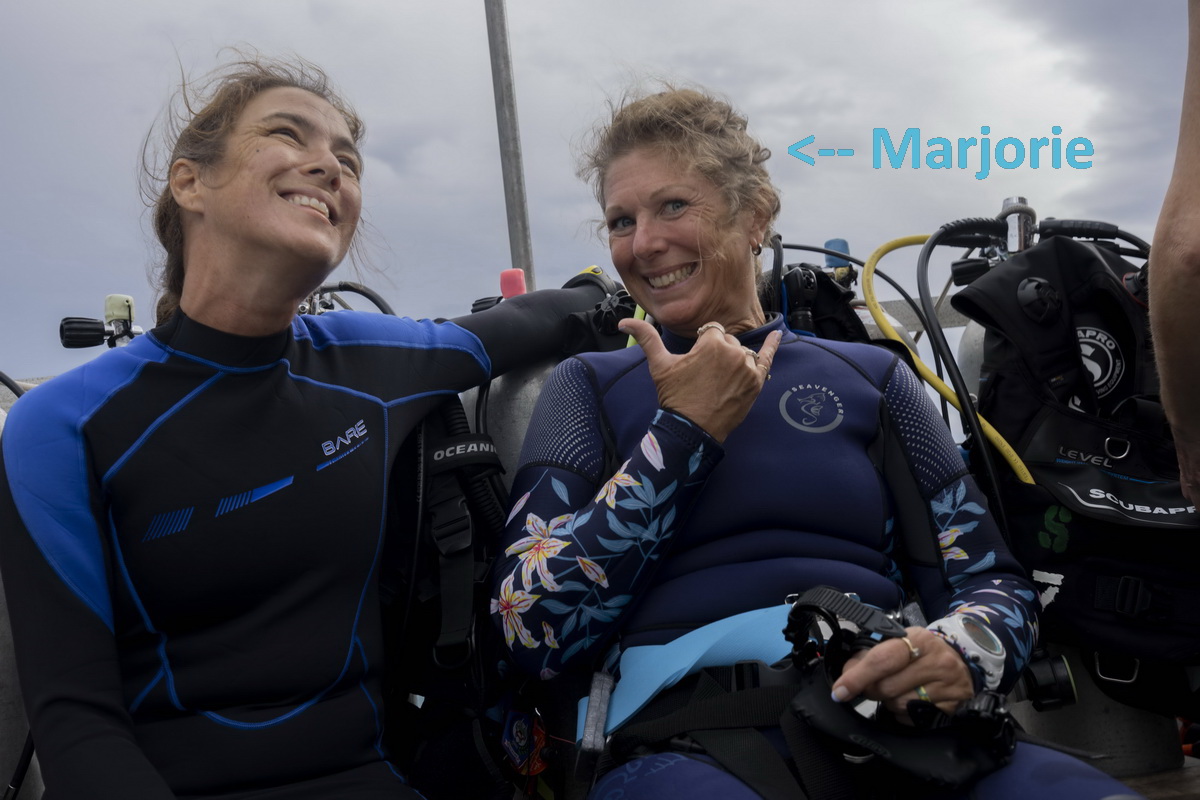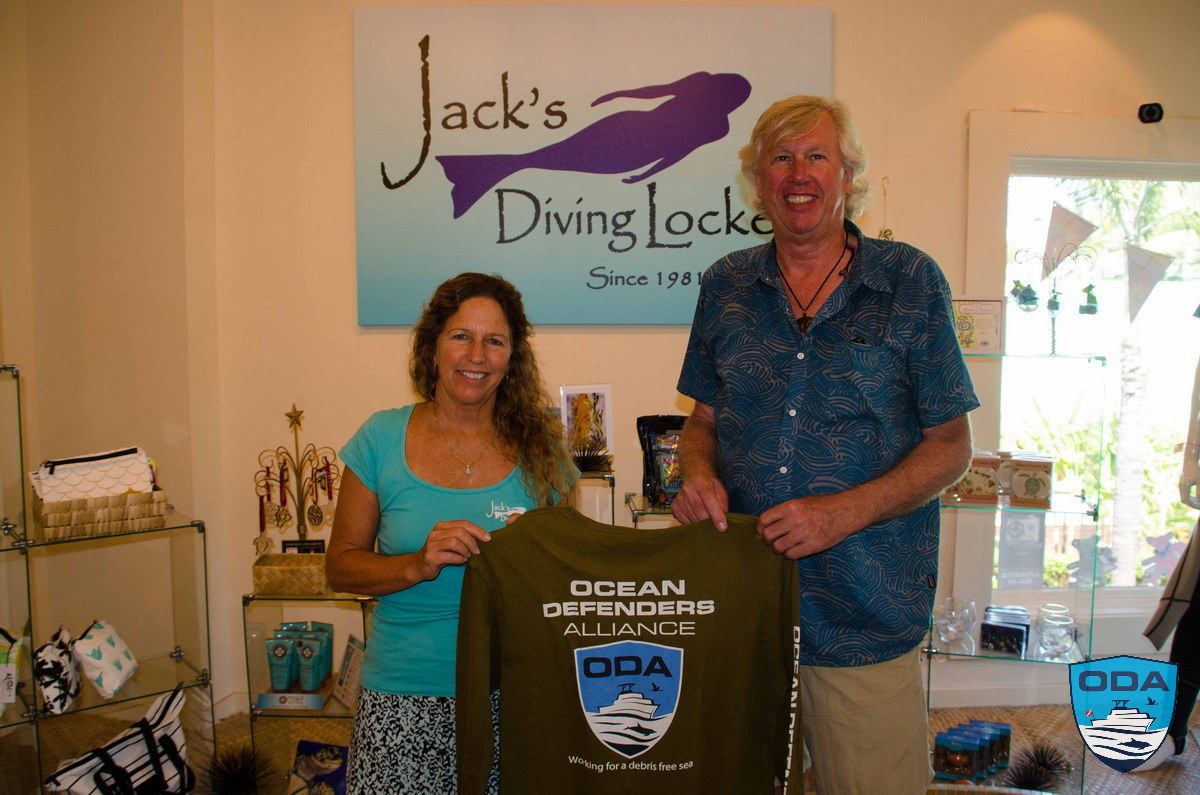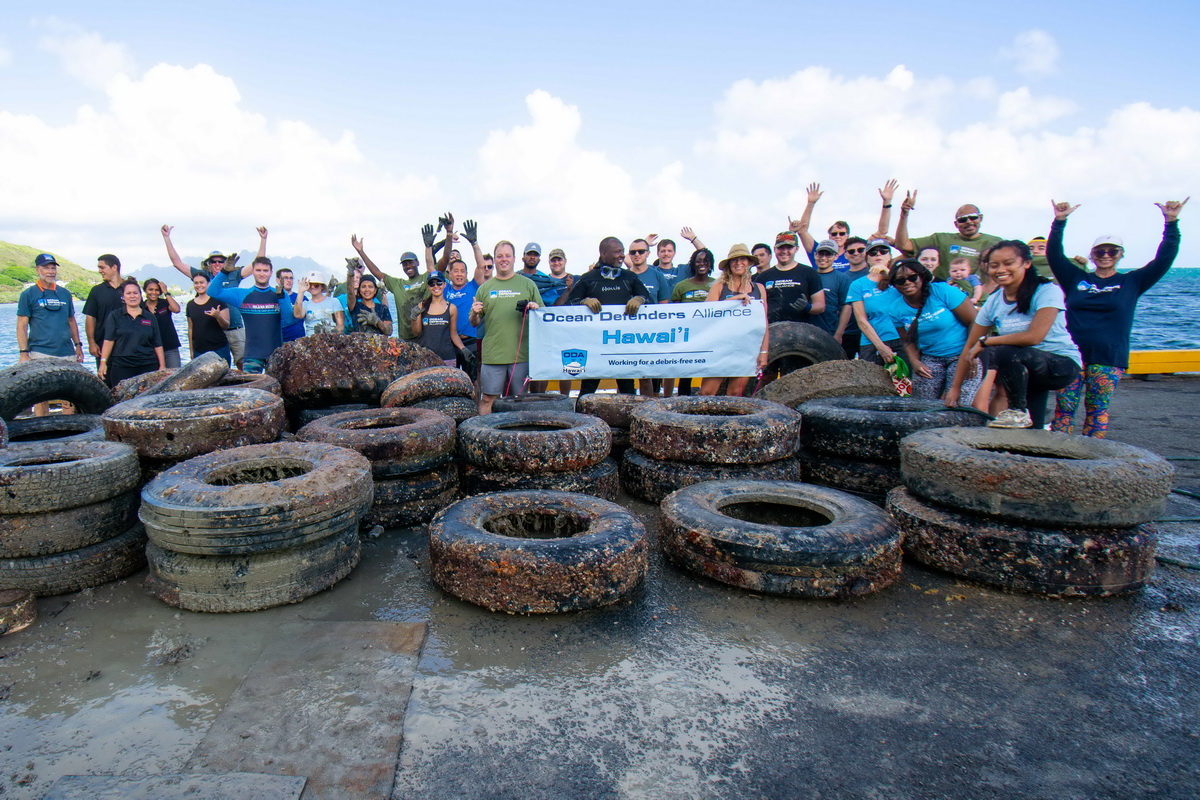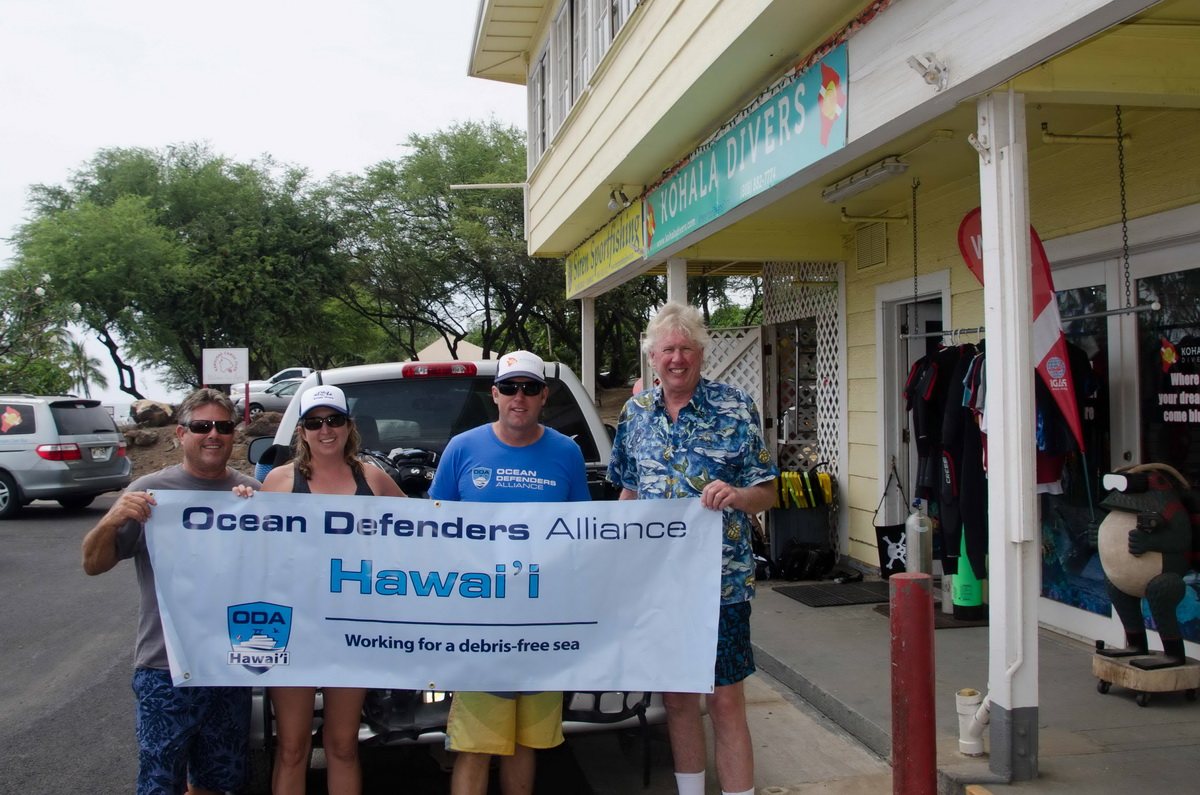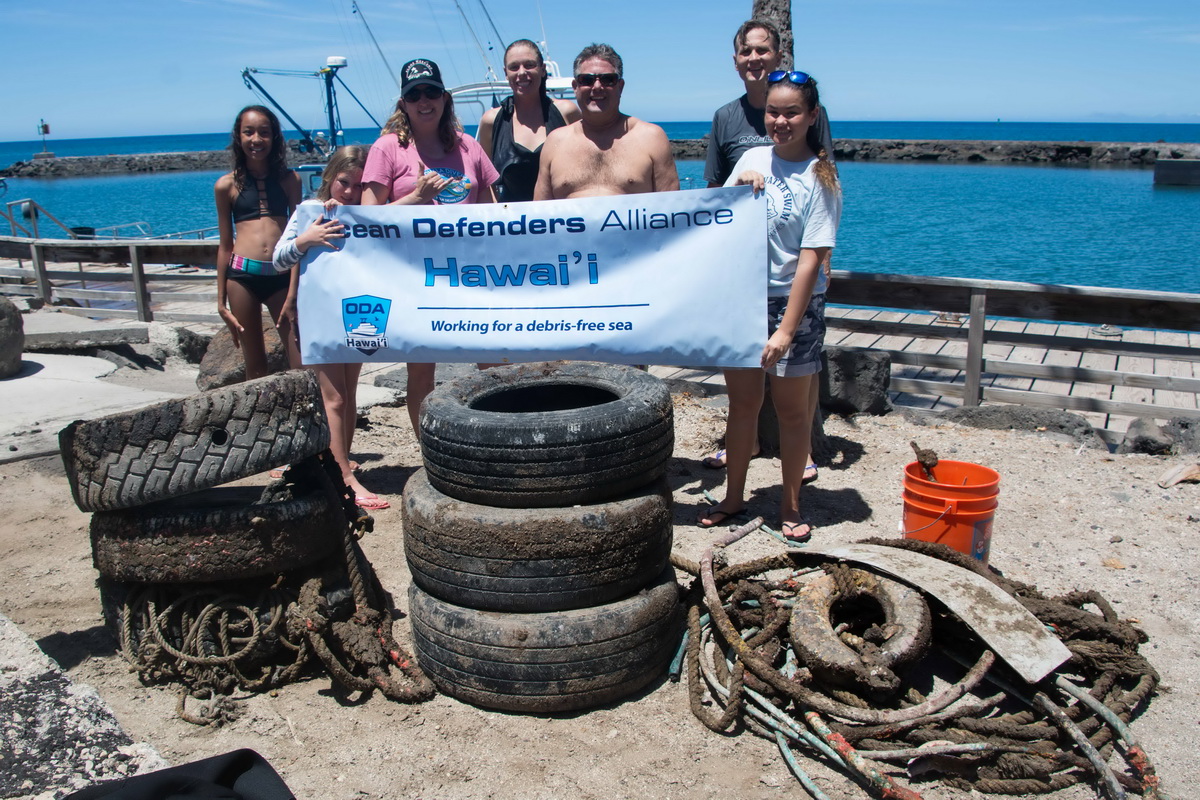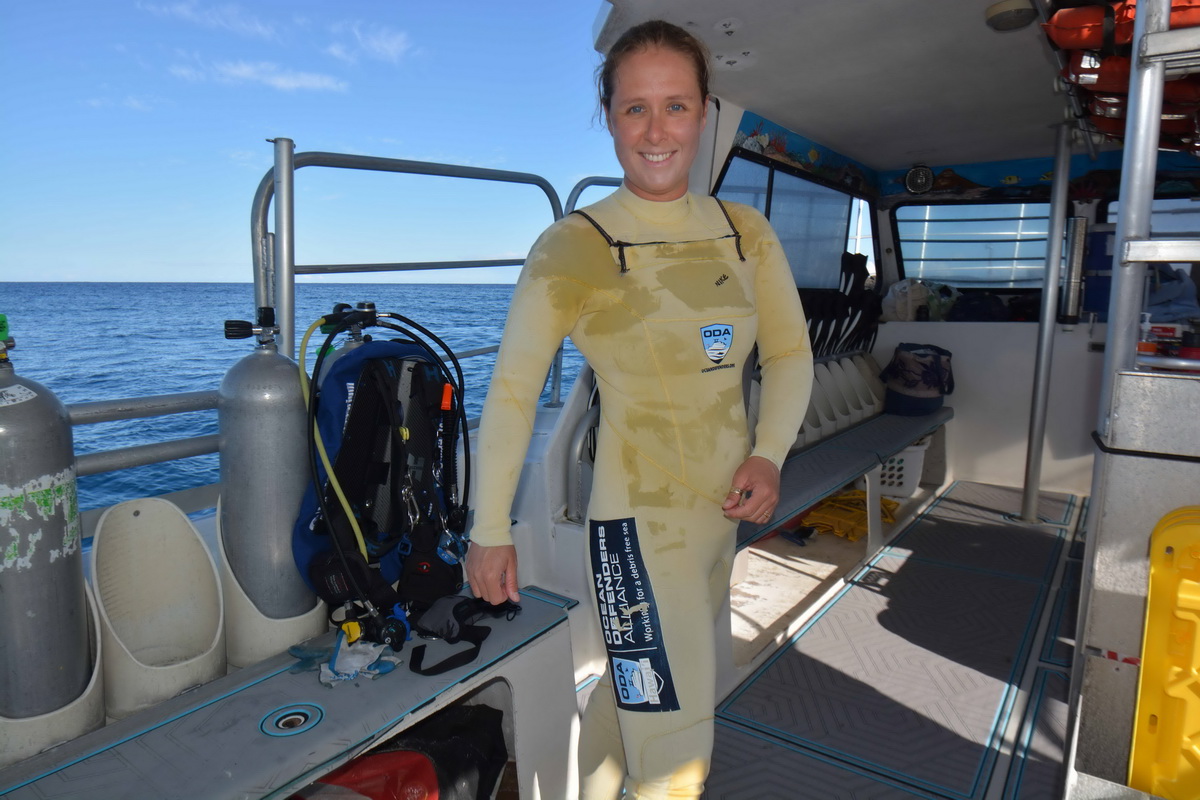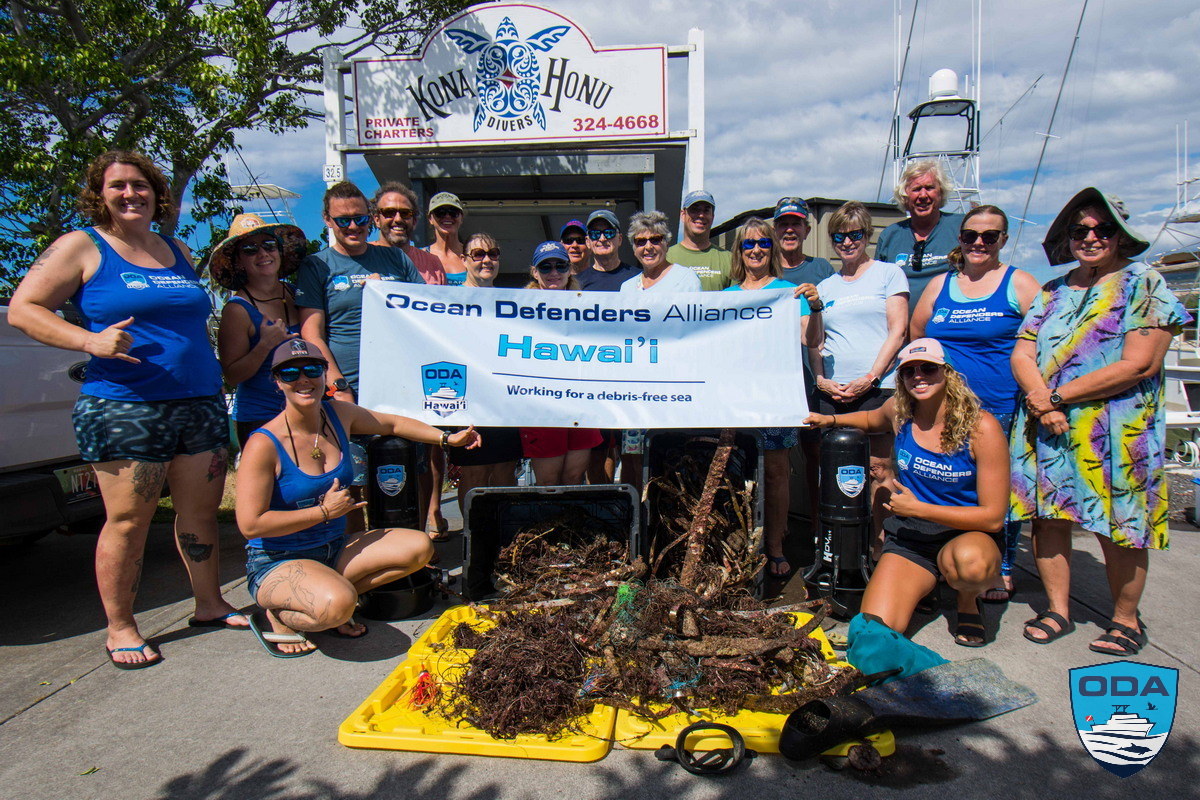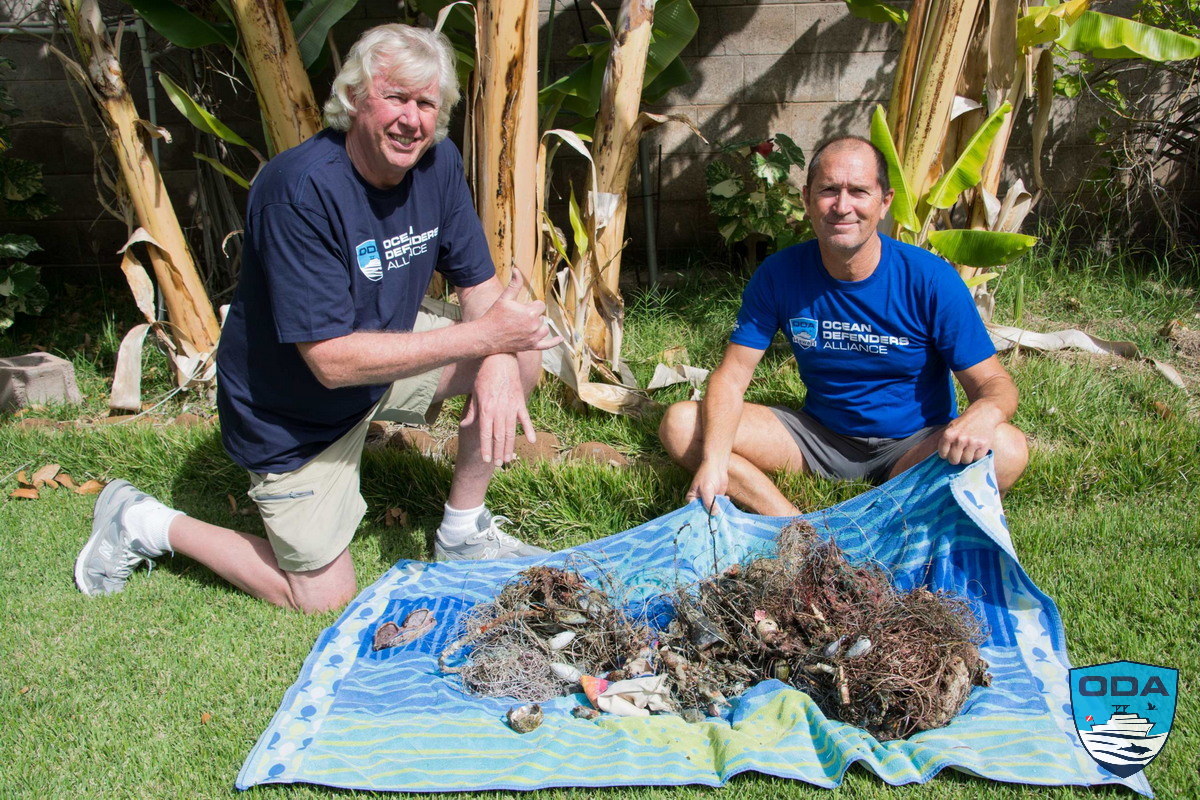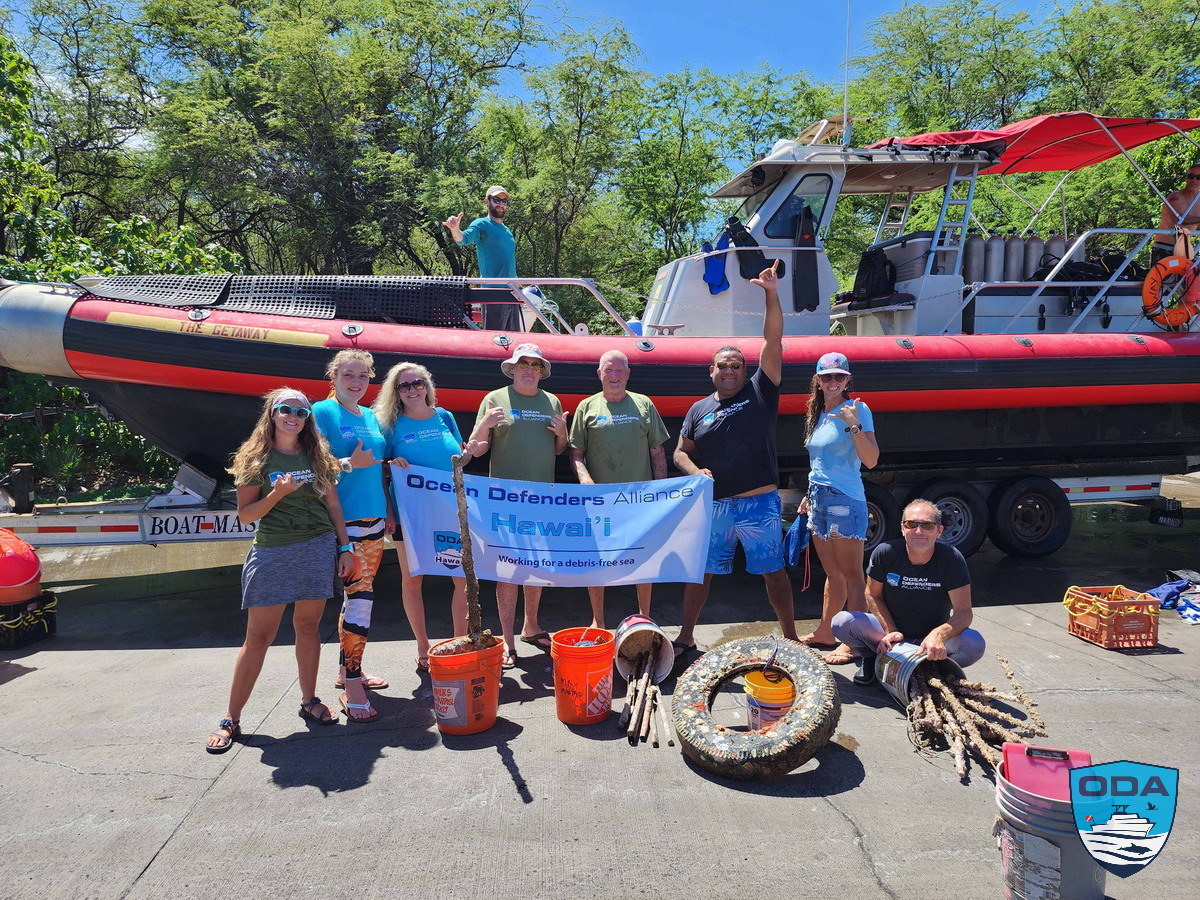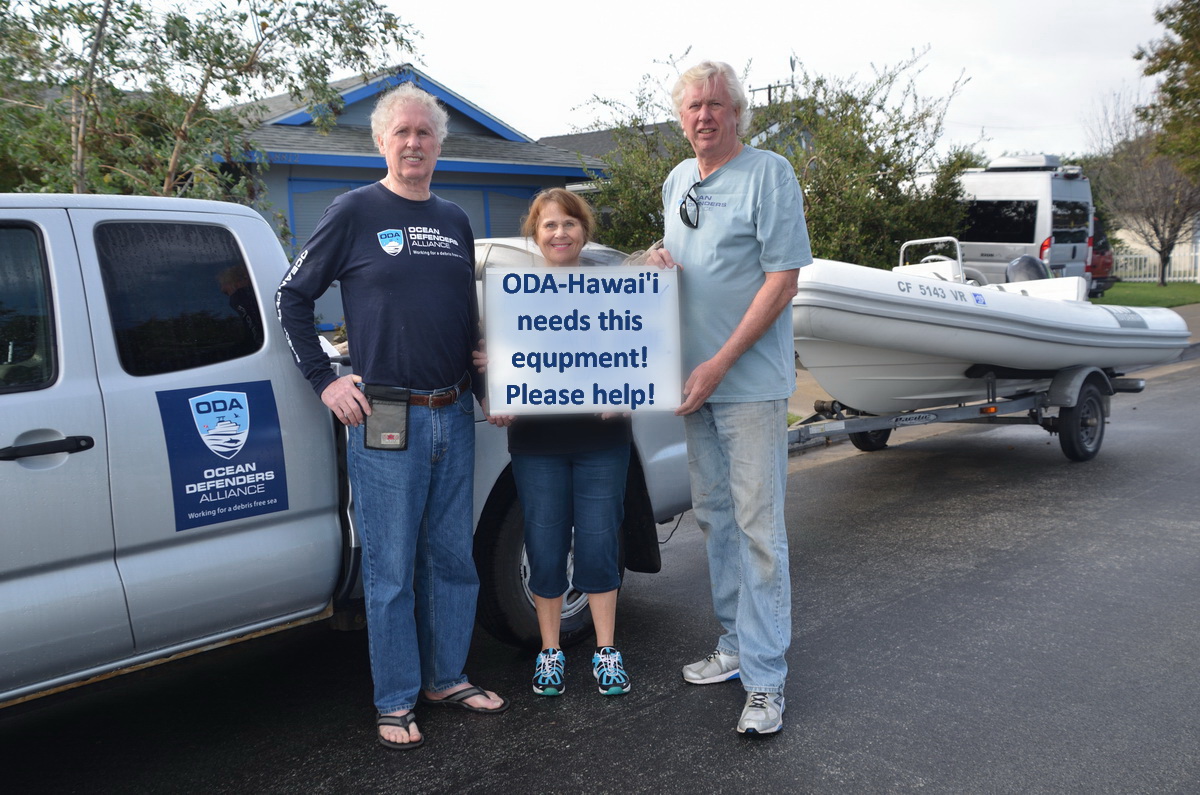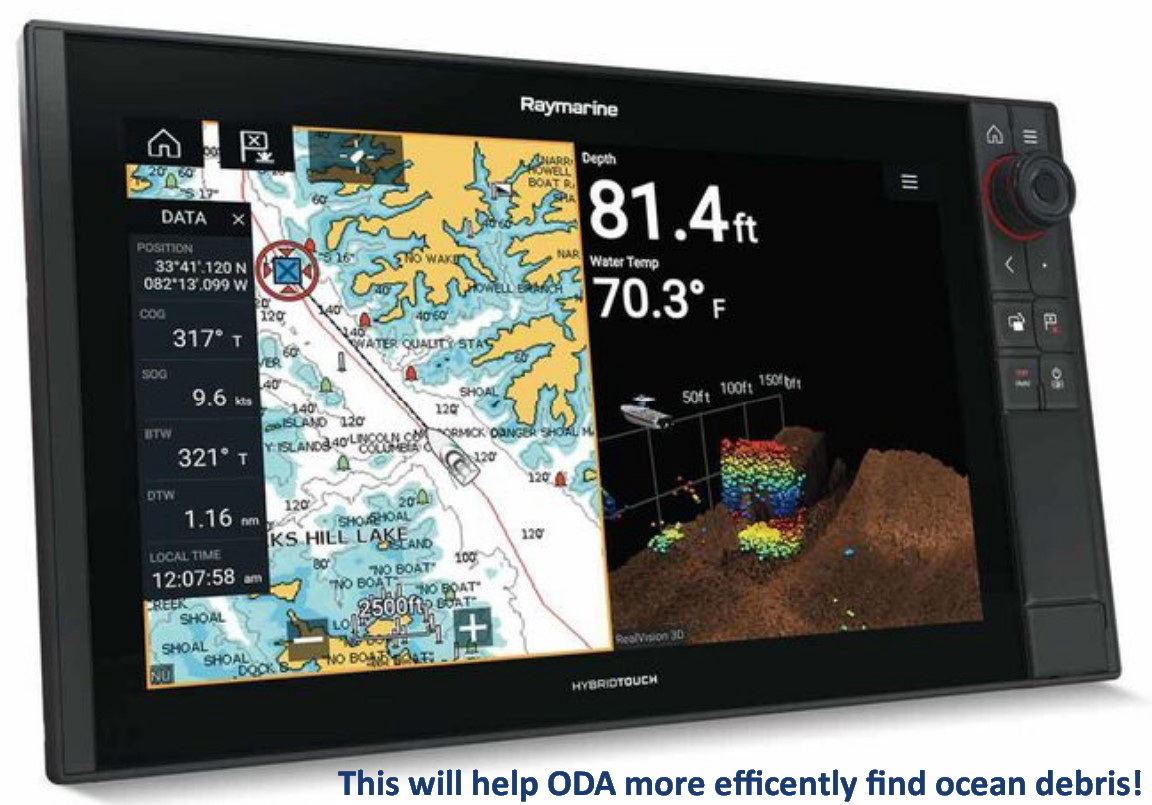By Founder and President Kurt Lieber
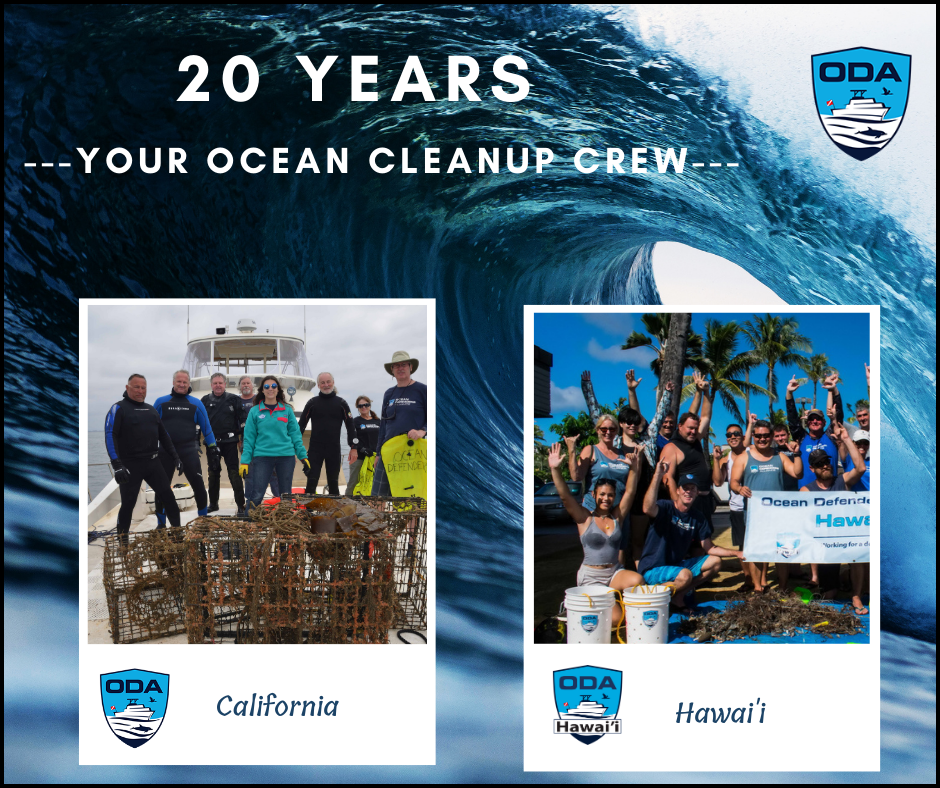 As the clock winds down on 2022, I’m reflecting on all that has transpired with ODA since we got our official nonprofit status way back in 2002.
As the clock winds down on 2022, I’m reflecting on all that has transpired with ODA since we got our official nonprofit status way back in 2002.
You read that right, we’ve been doing our best to help our friends in the oceans for 20 years!
Ever since I started scuba diving in California, 1979 to be exact, I’ve been enamored with the beauty and peace that can be found in the kelp forests that once covered huge swaths of our coastal waters. Scientists say that 90% of those kelp forests are now gone.
With that sharp decline we’ve also seen the fish populations plumet as well. Bear in mind, that a healthy kelp forest is home to roughly 1,000 different species of fish, invertebrates, sea birds and marine mammals. So, as the kelp has died off, so too will the kaleidoscope of other life forms that made our coastal waters so magical.
I’ve always been inclined to do volunteer work. Whether helping with the setups for the 4th of July events our small towns put on every year; putting in long hours to help our neighbors recover from a flood, hurricane, severe snowstorm, forest fire, or even just playing music for people struggling with mental health issues in hospitals. It’s not just the act of helping people out in need, it’s the sense of belonging to the community that can only come from volunteering.
I’ve never understood the mindset that a lot of people have who feel they have to be paid in order for their efforts to be rewarding. I can’t recall one time in my life where I’ve felt good about what I accomplished after putting in 60 hours of work at a job I was being paid to be at.
I’ll never forget the first time I started putting in time underwater to help our kelp forests. It was 1982 and I had read about a small group that was trying to come up with a way to help restore the kelp that was vanishing off the coasts of Laguna Beach and Newport Beach.
The group was called Marine Forest Society, and it was run by Rudolph Streickenberger. He had a small boat that he would take out to the local reefs and get us divers to secure some devices that would provide some kind of substrate for the kelp to attach themselves to.
I volunteered with them for about two years. It was fun to be with people who cared enough about our waters to do something that hadn’t been attempted before. We’d meet after work one day a week, to plan what we hoped to accomplish, and then go out and do the field work on the weekends. The project didn’t work out in the long run, but the thrill of being part of something that was trying to make a difference has stuck with me ever since.
Fast forward to 1999…
I was scuba diving all over California, as well as Hawai’I, the Bahamas, and Belize. I even got to visit to Fiji twice. But on all those dives I was always seeing the stark reality of the damage that recreational and commercial fishing has been doing to these areas.
In 1999, I had seen enough. I was diving off Anacapa Island and found an abandoned lobster trap with several animals stuck in there. If I didn’t do something about it those animals were going to die in there.
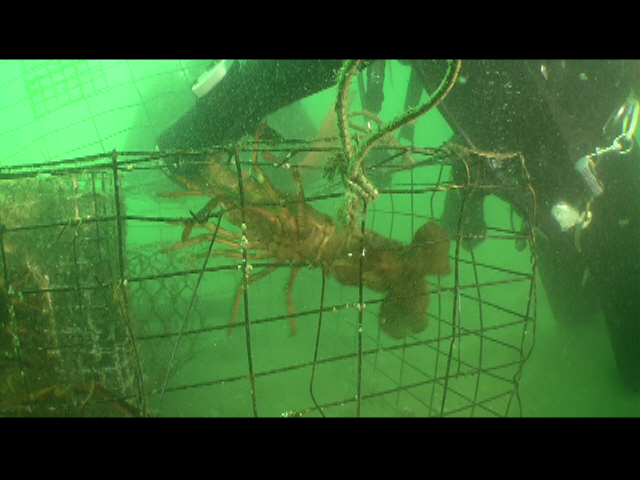 ODA crew releasing trapped lobsters in trap, 2014
ODA crew releasing trapped lobsters in trap, 2014
After a few people helped me release them I was talking to a few of them once we got back to the boat. They were so enthused to be part of freeing the critters that I thought about getting a boat of my own and removing these abandoned traps on a regular basis.
The year it all began, 2000
At the time, I was volunteering with Sea Shepherd Conservation Society. I knew that people were donating boats to them all the time. The vast majority of them were derelict boats that people were just looking to get rid of rather than pay to dispose of them properly. But a few of them were in working order.
I asked them if they could donate one to me so I could go out locally and start removing all this ghost gear that I was seeing on my dives. They said yes, and in April we took ownership.
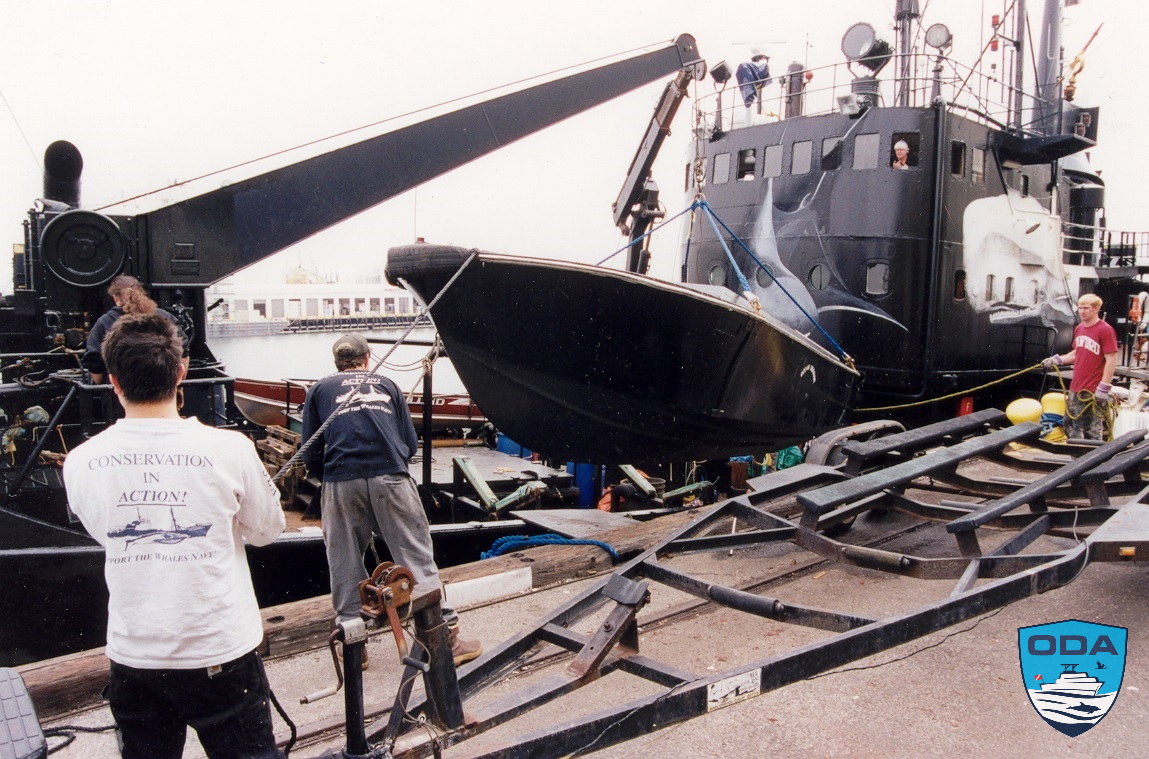 Here you can see Captain Paul Watson of Sea Shepherd (in window) onboard the Ocean Warrior with the Garibaldi on the deck, ready to be removed.
Here you can see Captain Paul Watson of Sea Shepherd (in window) onboard the Ocean Warrior with the Garibaldi on the deck, ready to be removed.
To honor one of our Southern California local fish, we called it the “Garibaldi.” These beautiful fish are such fierce defenders of their territory that they will pick up an urchin with their mouths, that is invading their space, and move it to another location. That encapsulates the delicate dance ODA faces by removing abandoned fishing gear from our local waters.
The boat was 24-feet long and was a mess. I bought a trailer for it, and we hauled it to a friend’s house (Brian Cleary) where he said we could store it while we restored it.
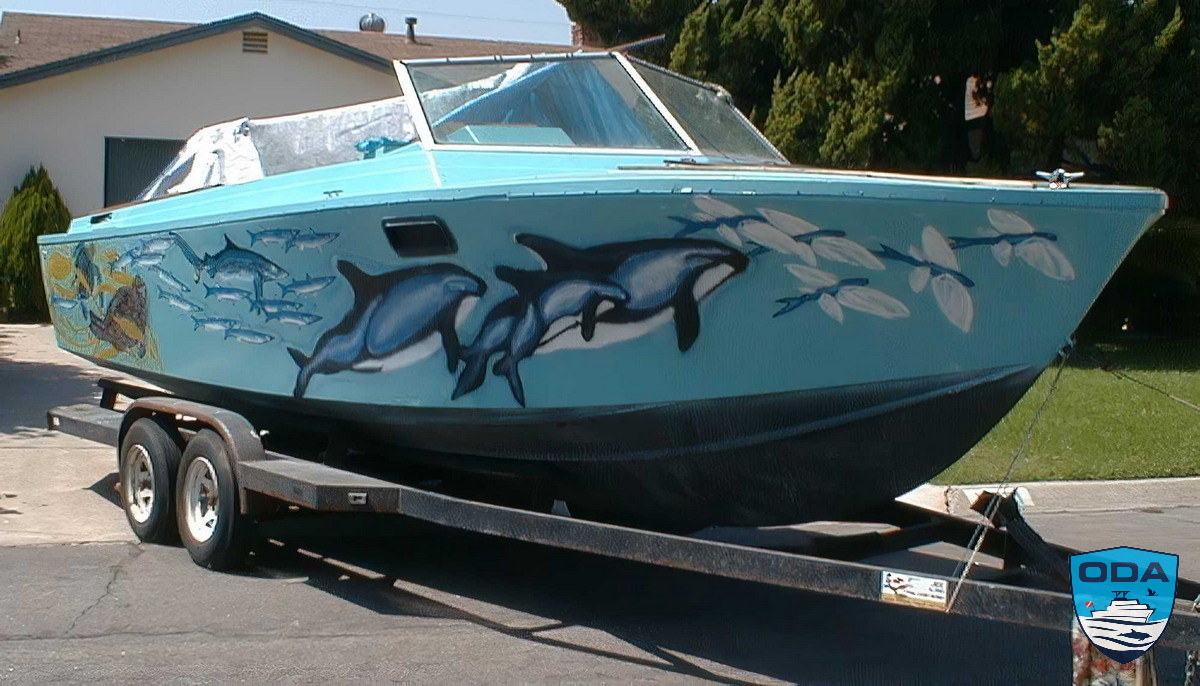 Garibaldi with beautiful paint job. Thank you to volulnteer Holly Gray for the artwork!
Garibaldi with beautiful paint job. Thank you to volulnteer Holly Gray for the artwork!
We thought it would take six months to get it up and running… Three years down the road we had our first boat ride! What was it that Maxwell Smart used to say on that show Get Smart? “Missed it by that much!” ;-)
I got some of my friends together and we worked on that boat every weekend for those three years. But the more we learned, the more we found out how bad the condition of the boat was. In hindsight, we should have just bought a boat rather than sink thousands of hours of time, and tens of thousands of dollars of our own money into it.
But we kept at it until the boat would float, or would it?
The Boat Who Wouldn’t Float
When we finally were confident that the boat would work, we hauled it out of Brian’s driveway and headed to the nearest boat ramp in Huntington Beach.
We made it all of 100 yards from the ramp when the engine stopped working. Dead in the water. The first of many escapades.
Having worn out our welcome at Brian’s house (and we don’t blame him!), we hauled the boat back to my house where we eventually got the boat seaworthy. A few months later we headed to a dive site where I knew there would be abandoned lobster traps. It was along the coast of Laguna Beach.
We pulled up three traps and several hundred feet of trap lines on that momentous day. We were on our way! Then on the way back to the harbor the bilge pump stopped working and the boat was filling up with water. We had to start bailing it out or we were going to sink…
Turned out that the debris that was on the traps and lines was falling off and clogging up the bilge pumps. Because it was such a small boat, we could never keep the debris out of the boat. We needed a bigger boat so we could keep the debris from getting into the bilge area.
Making it official
In 2002, knowing we had to defend the wildlife in many coastal areas, we filed for nonprofit status.
It was good to formalize our organization and it allowed people from all over the world to be part of our crew. The ODA donors are the crewmembers who make everything happen! We could not haul out one trap or line without them. [If you're a donor or ever have been, THANK YOU!]
Clearwater to the Rescue
In 2006, Sea Shepherd donated another boat to us. This was a 34-footer. We named it the Clearwater. Note: We have named our Monthly Giving Program “The Clearwater Crew” because that’s what we’re all about doing on a regular basis! Check out our Clearwater Crew page.
The boat was made out of aluminum and was once used as a Coast Guard rescue vessel. It had two engines in it and was built solid as a tank. Just what we needed.
After removing traps from up and down the coast of Orange and Los Angeles County, we got a report from a diver who lived on the island of Catalina, about a fishing boat that had sunk off the south side of the island. It was a squid fishing boat, and when it sank the net was fully deployed and was covering a large part of the boat which was continuing to entrap wildlife.
The boat, The Infidel, sat perfectly upright on the sea floor. The problem for us, the bottom was at 150 feet. Well beyond the recommended safe diving limits which were 130 feet for recreational divers, which most of us were.
So, I put out a call to the dive community and asked if any folks who had higher skill sets than us would be willing to try to remove the net from this wreck. The response was incredible. Roughly 20 people wanted to help out. These were technical divers as well as people using rebreather systems. They can safely go much deeper than recreational divers.
This job was the biggest thing we had ever tried to tackle, and the Clearwater was not the boat we needed. So, I chartered a trawler to take our, roughly, 20 divers out to the site.
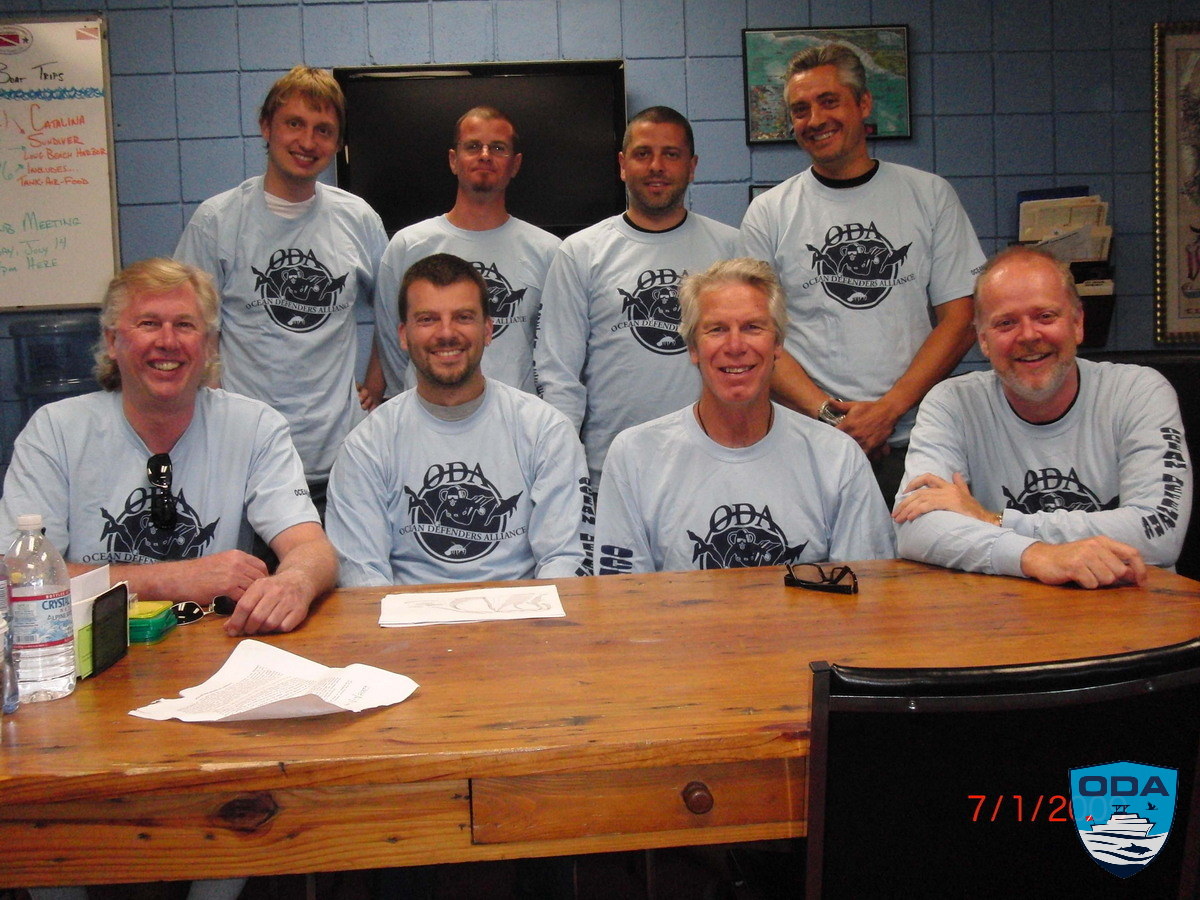 Our highly skilled volunteer scuba divers meet to discuss strategy on the Infidel dive.
Our highly skilled volunteer scuba divers meet to discuss strategy on the Infidel dive.
Somehow the Los Angeles Times got wind of the story and sent a reporter and photographer to go out with us. When the story was published, we now had a spotlight shown on us. I started receiving letters and emails from around the country and world. They all wanted to know if there was an ODA in their area that could help them with all the marine debris in their waters.
No, there wasn’t but it got me thinking…
Below you can see the Times article. Page One is on the left; the big photo is an ODA diver! The article starts just under the photo of the diver; see the next image with title "From under the sea, a deadly snare is removed."
By 2014, the Clearwater was running out of steam
Even though the hull of the boat was solid, Clearwater’s engines were worn out. We’d already had one of the engines partially rebuilt, but they were leaking oil and coolant constantly.
We started looking around for a new and larger boat. We eventually found one, but the cost was way over our budget. We needed to try writing some grants to people who we knew were supporting ocean conservation organizations like ODA.
One person we submitted a request to was Bob Barker. He of Hollywood fame. Much to my surprise and delight, he agreed and gave us our largest donation ever!
Even though it wasn’t enough to cover the total cost of the boat, we had some money in the bank that we combined with his donation to purchase it. In his honor, we named the boat Mr. Barker’s LegaSea.
The vessel is a 54-foot Chris Craft, with twin diesel engines. It’s got a galley where the divers can get out of the elements after their dives and warm up. There are several bunks below decks, and it even has a small kitchen area.
The LegaSea has a place on the bow (front deck) for a small RIB (Rigid Inflatable Boat), which we use to chase down the debris that our divers send to the surface with lift bags and the RIB crew tows the heavy debris back to the boat for haul-out.
Another piece of vital equipment on this boat is a davit (i.e., a crane) that lifts the RIB on and off the deck. The davit is also used to haul up the debris that the RIB crew brings back to the boat. The RIB and davit have made us a lot more efficient, and we plan on using it for years to come.
Next up, Hawai’i?
In 2016, I was invited to give a presentation to a dive club out of the law school at the University of Hawai’i. How could I refuse?
The talk was well attended and by the end of the session they all wanted to start an ODA chapter there on Oahu.
Rather than buy a boat, I started contacting some of the dive boat operators throughout the island to see if we could charter one of their boats and do some underwater cleanups of the reefs around the island.
Matt Zimmerman owns Island Divers Hawai’i and had been doing periodic cleanups on his own for several years. I wanted to up that to once a month. So, we agreed on a charter fee, and we’ve been doing these cleanups once a month ever since -- with great success.
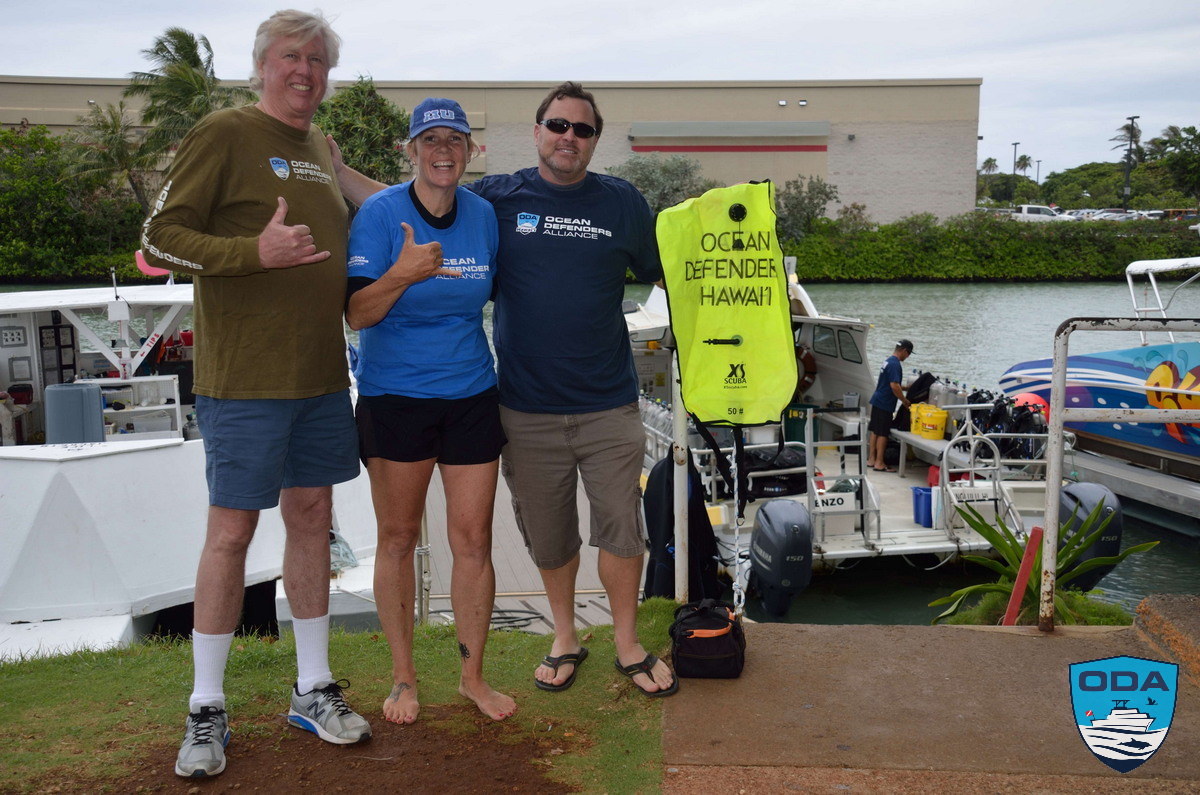 Kurt Lieber with Island Divers Hawaii folks - Dive Master Mary Christensen (who went on MANY outings with ODA)
Kurt Lieber with Island Divers Hawaii folks - Dive Master Mary Christensen (who went on MANY outings with ODA)
and owner Matt Zimmerman (who's a great partner for clean oceans!)
There are so many dedicated and loyal volunteers who take part in these cleanups. ODA is thankful to all of them, and we’re very grateful to Oahu Chapter Leaders Glenn Roberts and Marjorie Zensen for organizing and leading those outings (and others around the island of Oahu).
On average on each of these monthly outings we remove 120 pounds of toxic lead fishing weights as well as 2,000 feet of fishing lines.
Onto the Big Island of Hawai’i
In September of 2017, I contacted the couple who own Jack’s Diving Locker (JDL), Teri and Jeff Leicher. I had been going on their boats for several years and liked how their crews treated people and the environment. They don’t just pay lip service to marine conservation; they talk about it in their dive briefings before every dive.
Teri, Jeff, and I sat down and agreed to work together.
We first started by chartering one of their boats to go out around the waters off Kona to look for floating plastics. When we didn’t find much of anything, I was asking the boat captain, Matt Bogdanovitch, if he thought there was any debris on the bottom of the harbor that we could remove. He thought it was worth a look. So, we dived in to see what might be done.
Just on the 30 minutes we were down there we found tires, hoses, plastic tubing as well as fishing hooks and poles. So, I contacted the harbor master and asked if we could organize and underwater harbor cleanup. The request went up the food chain within the office and they wanted to do it!
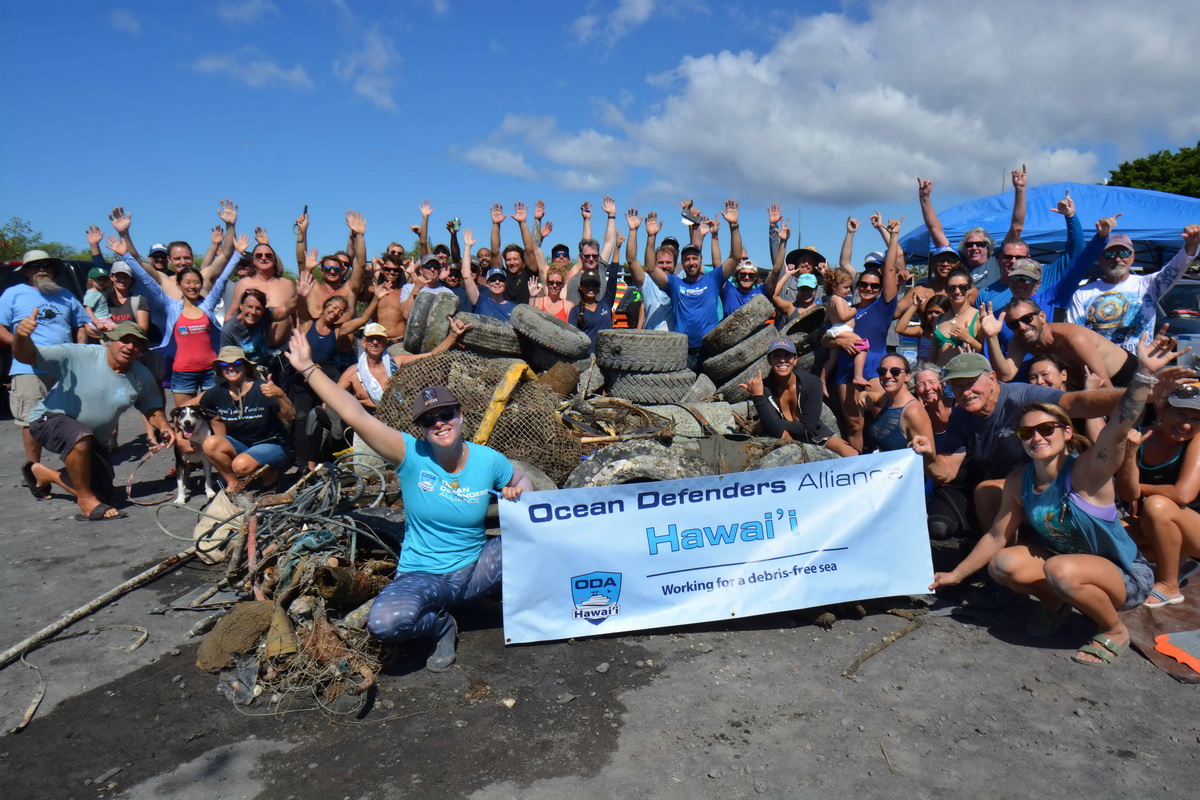 Crew with Catch of the day at Honokohau Harbor, Cleanup #9
Crew with Catch of the day at Honokohau Harbor, Cleanup #9
To date, we have done nine cleanups of the Honokohau Harbor. Every time we do one, we get more debris as well as more volunteers. It’s the same on Oahu, too. When I was there in November, we had 55 volunteers show up for the Honokohau cleanup where we removed 6,720 pounds of debris, including 46 tires.
A week later on Oahu at Kaneohe Bay, we had 63 volunteers to help remove 7,924 pounds of debris, including 63 tires! (I should have gone to the lottery that day and bet on the number “63”!)
Expanding our partner base
In 2017, we also partnered with Kohala Divers. We're so thankful to be able to do good work for the oceans with Greg and Rebekah Kaufmann and their team!
Earlier this year one of our dedicated volunteers, Sarah Milisen, asked the owners of Kona Honu Divers if she and I could give a presentation to the members of their dive club. They were glad to host us. And Sarah became our Chapter Leader for the Island of Hawai'i!
There were about 25 people at the meeting and by the end of the talk we had come to an agreement to start doing reef cleanups by chartering their boat once a month. We’ve done four cleanups with them so far, and each time the boat has been filled with eager volunteers. On each of these outings, on average, we’ve removed 100 pounds of lead fishing weights, 1,000 feet of fishing lines, and dozens of fishhooks.
Maui bound…
I’ve been going to Maui to dive for over 40 years. It’s a spectacular place to dive and sightsee. I’ve been trying to find a dive boat operator that would want to work with us for a few years, but nothing ever jelled.
Then, earlier this year, I heard about a guy who was doing underwater cleanups around Maui and was posting about it on Facebook. I contacted him and we met on one of my recent trips there to talk about collaborating.
Lloyd Johnson is a dive instructor and has organized reef cleanups with his friends and dive buddies for years. These were all dives that originated from the beach (i.e., walk in). I suggested that ODA pay for a dive boat charter to get them into more sites that weren’t accessible from the beach. He was thrilled at the offer.
He introduced me to a friend of his, Michael Dougan, who owns a dive boat. After a short discussion, we agreed to charter his boat for a few dives, to see if this would work for both ODA and him. We’ve done three charters so far!
On my next trip to Hawai’i, in March, I plan on meeting with other dive boat operators to see if any of them might be interested in forming a partnership. Lloyd is based out of Kihei, and that’s where he’s been doing the bulk of his outings, but we’d like to expand into the Lahaina area in 2023. If anyone reading this knows a likely partner in Lahaina, please contact us!
Plans to Respond More Rapidly to the Oceans in 2023
Because of all these partnerships we have in Hawai’i and our California operations going at the same time, we’ve had one of our most productive years ever.
I see nothing but growth ahead of us.
We’d like to raise the funding to buy a few major items that will increase our productivity.
First, would be a boat that we would use as a “rapid response team” on the Island of Hawai’i. When we charter boats, we have to work within operators’ schedules, but the debris that swirls around the Big Island doesn’t just sit there waiting until we can organize a crew and charter a boat. It moves around and can be miles away after someone sees it and reports it to us.
If we had this boat, we could be out on the water in a matter of hours rather than days. A 20-foot RIB (Rigid Inflatable Boat) would suit us best. But we’d need a few other items to go along with it.
We’ve been looking into what it would cost to buy such a boat and have several affordable ones in mind. We’d also need to purchase two outboard engines, some electronic equipment, a boat trailer and a truck to haul it around with.
Another thing we’d like to invest in for our California operations is a Side-Scan Sonar (SSS) device. This would be mounted on our vessel Bob Barker’s LegaSea and would allow us to “see” traps and other manmade debris electronically on a computer screen.
A lot of time the underwater visibility is so bad in California that the divers have a hard time finding these traps, even if they are just 10 feet away! The SSS would make it a heck of a lot easier for us to locate and remove whatever the debris was if we could drop the divers on the exact spot where we see them on the computer screen.
With the help of our ever-expanding volunteer base and our donors, I am sure we can make 2023 even more productive than 2022.
I hope you will go along with us for the ride, this is going to be fun!!
Captain Kurt
We would love to have your partnership in keeping the sea free of man-made debris. Please consider making a year-end donation for the oceans! We will carefully steward your contribution and be happy to have you as a teammate in this life-saving work!


